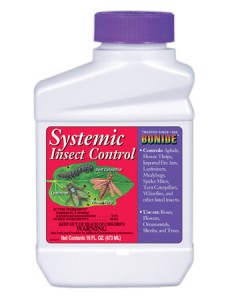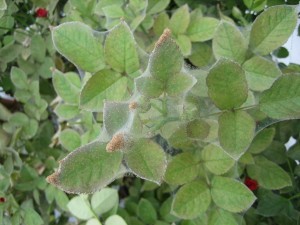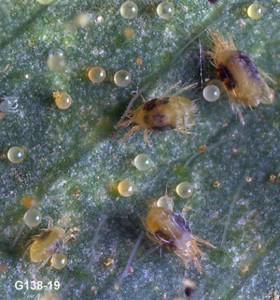Spider Mites
Spider Mites
Almost too small to see with the naked eye, spider mites can become a very big problem in many ornamental plants. Twospotted spider mites are the most common in our area and are frequently seen in roses, marigolds, spruce, and many other ornamental plants. Spider mites attack by using needle-shaped mouth parts to suck the sap out of growing plants. Spider mites live in colonies, usually on the underside of leaves, and often go unnoticed until the infestation is severe. Watch for leaves or needles that appear to be covered with dust. The tiny webbing will often collect dust before the actual webbing is visible. Leaves may also have a mottled yellowish or dirty appearance.
If you suspect spider mites, but aren’t sure, try shaking the leaf or branch over a sheet of white paper. If the dust that falls on the paper begins to move you probably have spider mites. Or, if you rub your fingers across the dusty paper and the dust smears, you have spider mites.
Spider mites are very small. When fully grown they are about the size of the period at the end of this sentence. They can range in color from brown, to yellow to green with two dark spots on either side of the abdomen. Spider mites can take over a garden quickly because they can grow to full size within a week. And they can produce up to 12 eggs per week, making it easy for a spider mite problem to get out of hand quickly.
Adult spider mites overwinter within cracks in tree bark or underneath garden debris. Mated females emerge in the spring and begin laying eggs on plant foliage. Eggs hatch in about a week, depending on temperature. A complete life cycle requires one to three weeks. Spider mites are much more active during the summer months because they thrive in hot conditions and it is also the growing season for the plants that the spider mites feed on. There are several overlapping generations each year, with the first usually appearing with the first hot weather in May or June.
 Help prevent spider mite infestations by making sure plants are well-watered during dry conditions. Keeping the plants well-watered helps reduce the stress the plants are under during a spider mite outbreak. Also, spraying the plants with strong jets of water every two weeks can disrupt the spider mite nests and delay egg laying, as well as displacing the mites themselves. Once mites have fallen from the plant they typically will not return.
Help prevent spider mite infestations by making sure plants are well-watered during dry conditions. Keeping the plants well-watered helps reduce the stress the plants are under during a spider mite outbreak. Also, spraying the plants with strong jets of water every two weeks can disrupt the spider mite nests and delay egg laying, as well as displacing the mites themselves. Once mites have fallen from the plant they typically will not return.
 For plants that are especially prone to spider mite damage consider spraying with an insecticide containing acephate. I like Bonide Systemic Insect Control. This locally systemic spray is absorbed into the leaf tissue giving the spider mite a little dose every time they sink their mouth parts in to suck a little “plant juice”.
For plants that are especially prone to spider mite damage consider spraying with an insecticide containing acephate. I like Bonide Systemic Insect Control. This locally systemic spray is absorbed into the leaf tissue giving the spider mite a little dose every time they sink their mouth parts in to suck a little “plant juice”.
If you wait until you see the webbing, spider mites will be difficult to eradicate. Regular monitoring and taking preventative measures is a much better plan.




